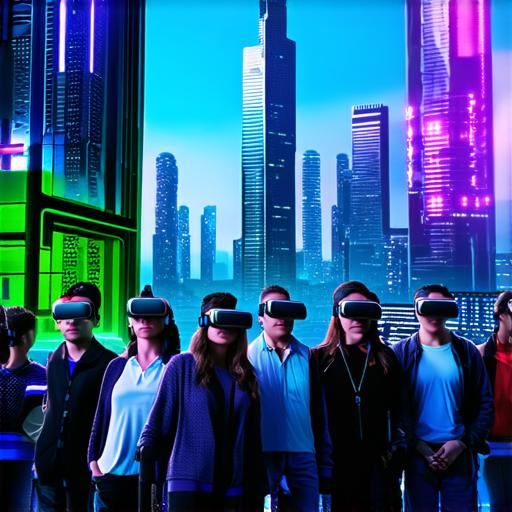Anxiety disorders are a common group of mental health conditions that affect millions of individuals worldwide. These disorders can range from mild to severe, with some individuals experiencing debilitating symptoms that interfere with their daily functioning and quality of life.
Virtual reality (VR) technology is rapidly changing the way people experience and interact with their world. As VR continues to grow in popularity, it’s also gaining recognition as an effective tool for treating a wide range of mental health conditions, including anxiety disorders.
One such condition that has been shown to benefit greatly from VR exposure therapy is social anxiety disorder (SAD).
SAD is a common mental health condition characterized by persistent fear or avoidance of social situations. This fear can lead to significant impairment in daily functioning and quality of life.
Virtual reality exposure therapy offers a promising alternative to traditional treatment options for SAD. In this type of therapy, individuals are exposed to virtual environments that simulate real-world social situations in a controlled and safe setting. By gradually exposing individuals to these simulated situations, VR exposure therapy aims to reduce their fear and anxiety in real life.
There is growing evidence to support the effectiveness of VR exposure therapy for SAD. One study published in the Journal of Anxiety Disorders found that individuals who underwent VR exposure therapy had significant reductions in symptoms of SAD compared to those who received a control treatment.
Another study published in the Journal of Consulting and Clinical Psychology found that VR exposure therapy was as effective as CBT in treating SAD.
Virtual reality exposure therapy can be particularly useful for individuals with SAD who have difficulty imagining or recalling real-world social situations. By providing a safe and controlled environment to practice these skills, VR exposure therapy allows individuals to gradually build confidence and overcome their fears.
One case study of a woman with SAD illustrates the benefits of VR exposure therapy. She had struggled with her condition for years and was unable to attend social events or interact with others without feeling intense fear and anxiety. After undergoing VR exposure therapy, she reported significant reductions in her symptoms and was able to engage more fully in social activities.
Virtual reality exposure therapy has also been shown to be effective for other anxiety disorders, such as generalized anxiety disorder (GAD) and panic disorder. For example, a study published in the Journal of Anxiety Disorders found that individuals who underwent VR exposure therapy for GAD had significant reductions in symptoms compared to those who received a control treatment.
It’s important to note that while VR exposure therapy has shown promise as an effective treatment option, it may not be appropriate for everyone. Individuals with severe mental health conditions or those who are highly sensitive to virtual environments may not be good candidates for this type of therapy. It’s also important to seek professional guidance and support when considering VR exposure therapy as a treatment option.
In conclusion, virtual reality exposure therapy offers a promising alternative to traditional treatments for a wide range of anxiety disorders, including SAD, GAD, and panic disorder. By providing individuals with a safe and controlled environment to practice social skills and gradually build confidence, VR exposure therapy can be an effective tool for overcoming fear and anxiety and improving overall quality of life.
FAQs:
What is virtual reality exposure therapy?
Virtual reality exposure therapy is a type of treatment that uses virtual environments to simulate real-world social situations in a controlled and safe setting. By gradually exposing individuals to these simulated situations, VR exposure therapy aims to reduce their fear and anxiety in real life.
Is virtual reality exposure therapy effective for treating anxiety disorders?
Virtual reality exposure therapy has shown promise as an effective treatment option for a wide range of anxiety disorders, including SAD, GAD, and panic disorder. By providing individuals with a safe and controlled environment to practice social skills and gradually build confidence, VR exposure therapy can be an effective tool for overcoming fear and anxiety and improving overall quality of life.

How is virtual reality exposure therapy different from traditional treatments for anxiety disorders?
Virtual reality exposure therapy provides individuals with a safe and controlled environment to practice social skills and gradually build confidence, whereas traditional treatments such as CBT and medication may not offer the same level of safety and control. By exposing individuals to simulated social situations in a virtual environment, VR exposure therapy can be an effective tool for overcoming fear and anxiety and improving overall quality of life.
